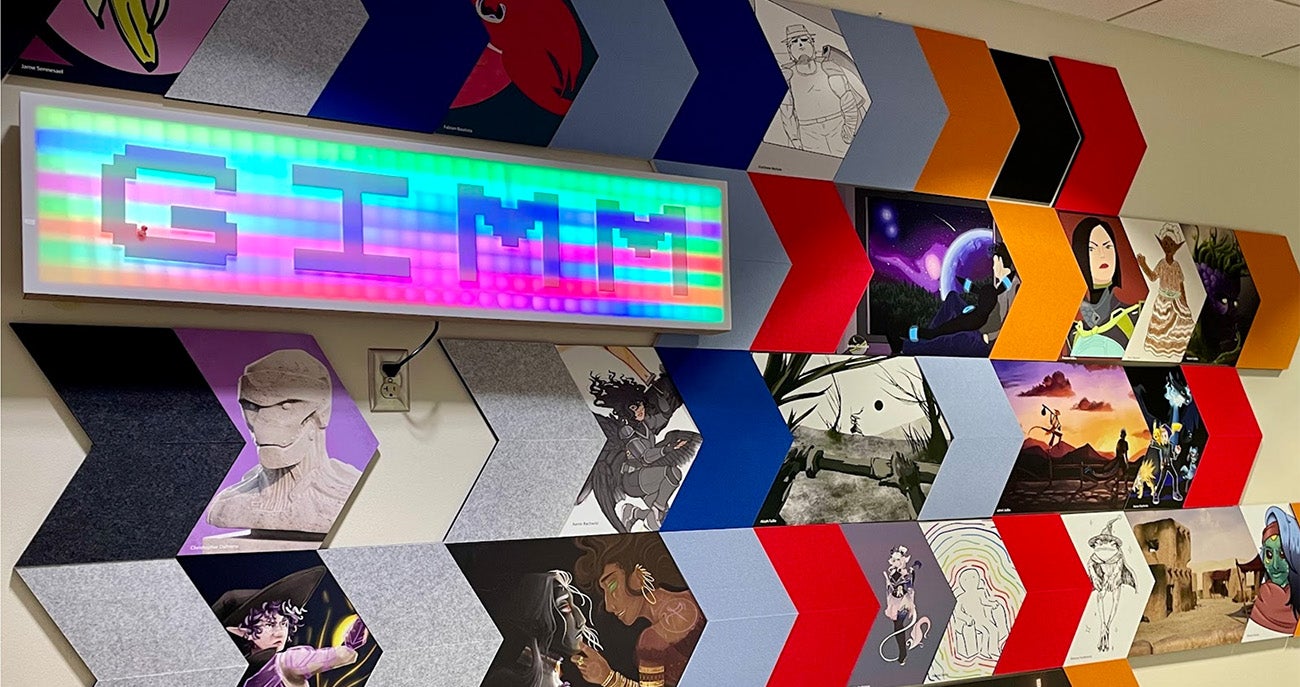
The video game industry generated $184.4 billion in revenue in 2022, about twice the movie industry ($76.7B) and half as much as the television industry ($408B) by comparison, and Boise State’s Games, Interactive Media and Mobile Technology program graduates students into some of the biggest companies in the game industry as well as big tech companies like Apple and Microsoft.
“Games are an integral part of the human experience,” said Anthony Ellertson, director of the program. “For years we’ve used games to train ourselves on strategy. In recent history, we’ve looked at them as more of an entertainment medium. What they really are is wisdom machines.”
Ellertson explained that contemporary video games provide us with two things. First, games make us approach problems from different perspectives. Players can choose the environment of play, as well as whether they want to play the hero or the villain, to play characters that exhibit physical or intellectual skills and can choose avatars that may look very different from the player. All of these options provide the player multiple perspectives from which to understand and try and solve a problem.
“The real reason we play games is for the experience of failure,” Ellertson said. “If you win right away there’s nothing to learn. That’s why I say games are wisdom machines.” He described how games allow us to compress learning experiences into systems that require us to look at different factors and perspectives toward a solution—and that we’ll fail along the way to finding the solution.
Ellertson extends this idea into the program’s design and curriculum, “Failure is not absolute. The real lesson is how do you learn from your failure?” He explains how professional designers and software engineers may fail at many approaches toward solving a problem before finding one that will work. Ellertson said that, “We really emphasize with the students that in a creative field [like software design and development] you have to be willing to look in a lot of different places for solutions, you’re going to have a lot of questions. You’re going to fail a lot.”
And the learning environment of the program reflects this idea. Students progress through the program as a group in an apprenticeship style learning environment. This teaching model emphasizes students working together on practical projects as they build their skills and individual portfolios—as their website states, “projects not papers.” As the student groups progress through the program they begin to take on real-world client work. Ellerston explained that ultimately he wants graduates of the program, “to use their talents and skills to be useful not just in their career, but also for the people around them.”
Games, Interactive Media and Mobile Technology started as a program in the College of Innovation and Design in 2015, graduated its first class in 2029 and its alums now work for a number of major game and tech companies such as Bungie Games, Riot Games, Rock Star Games, Microsoft, Amazon and Apple.
This fall, the Games, Interactive Media and Mobile Technology program graduated from the College of Innovation and Design into the School of the Arts within the College of Arts and Sciences. This is the third program to graduate from Innovation and Design into Arts and Sciences Boise State.
Amanda Ashley, director of the School of the Environment, expressed her enthusiasm for the collaboration, “I am beyond thrilled to welcome GIMM into the School of the Arts. Their commitment to creative thinking, experiential learning, student mentorship and community engagement is impressive and inspiring. GIMM faculty and staff excel at amplifying the triangulation of interdisciplinary research, teaching and engagement. I am excited to see what new opportunities we can nurture as partners, and how our collaborations can serve students and faculty as creators, makers, and do-ers in the School of the Arts and across the university.”
Ellertson said that he looks forward to deeper collaborations with departments and students within the School of the Arts and that, “foundationally, we’re very interdisciplinary. There are a number of things we’re already starting to explore in the areas of augmented and virtual reality, artificial intelligence, and the Internet of Things. We are interested in what a twenty-first century curriculum looks like using those technologies.”
Shawn Benner, dean of the College of Innovation and Design, who helped develop the program, stated, “Many had doubts when GIMM was launched 8 years ago, but today we all can appreciate how important this training is for the increasingly digital world we live in. With GIMM’s graduation to the College of Arts and Sciences, CI+D is fulfilling our mission as a college for incubation and we could not be prouder of the GIMM faculty for what they have built. We look forward to watching them continue their great work with students and the community in their new home”
Leslie Durham, dean of the College of Arts and Sciences, said, “I have long admired the GIMM program, and have hoped, almost from its inception, that it might someday join the College of Arts and Sciences. I have been so impressed by the faculty’s dedication to their students, and when I’ve had the opportunity to see GIMM students’ work in their lab and out in the community, I’ve been moved by the combination of creativity and thoughtfulness. I can’t wait to see the new collaborations that emerge within and beyond COAS thanks to these newest members of our college community.”
With 260 current students, and 194 graduates, the Games, Interactive Media and Mobile Technology at Boise State is helping to shape the future of how we interact with games and technology—and maybe by example teaching us that failure is not absolute.
Discover more about the students and the client work they have produced on the Games, Interactive Media and Mobile Technology program website.